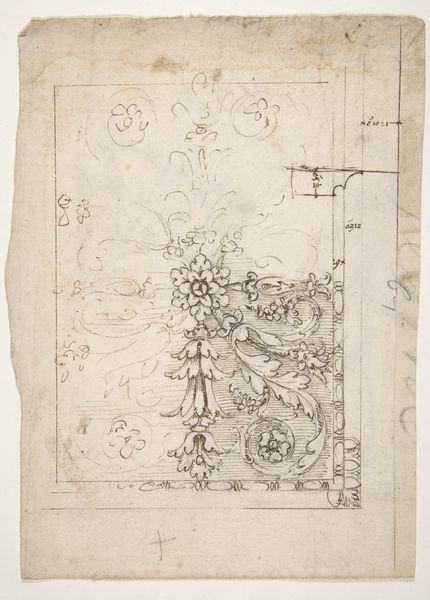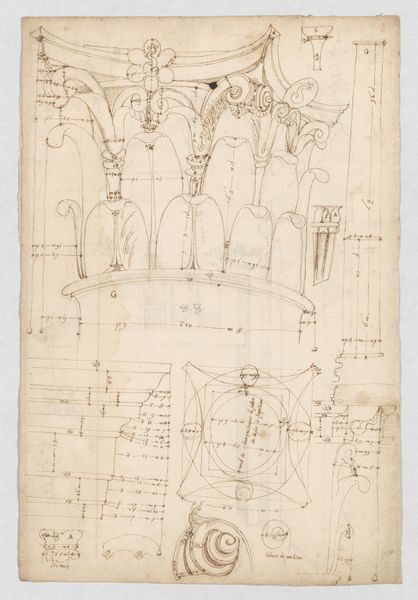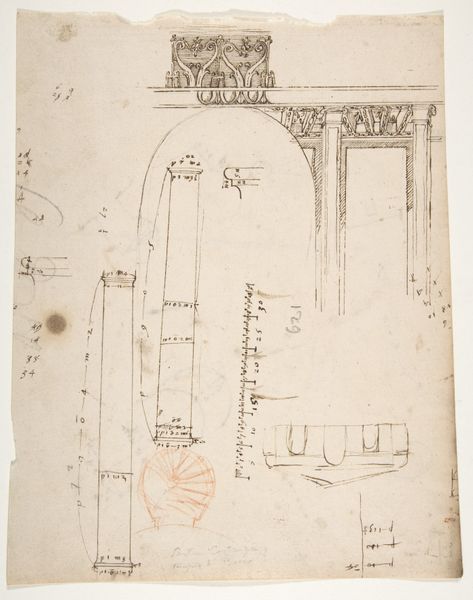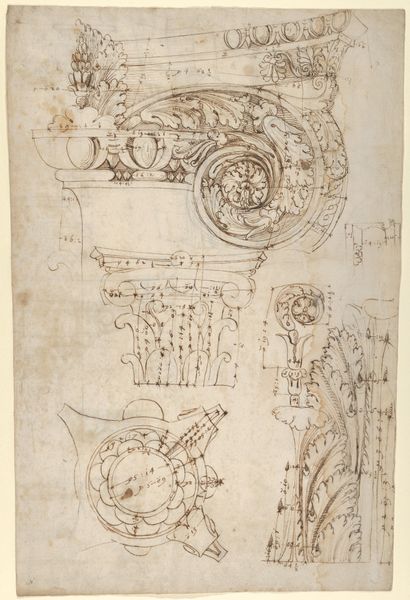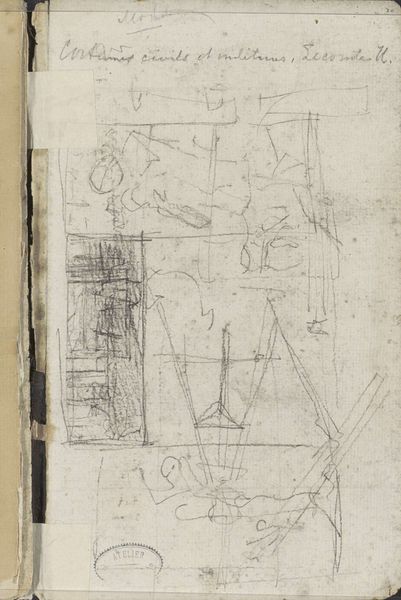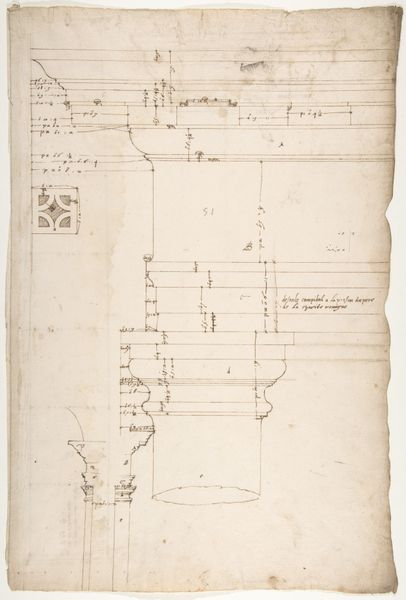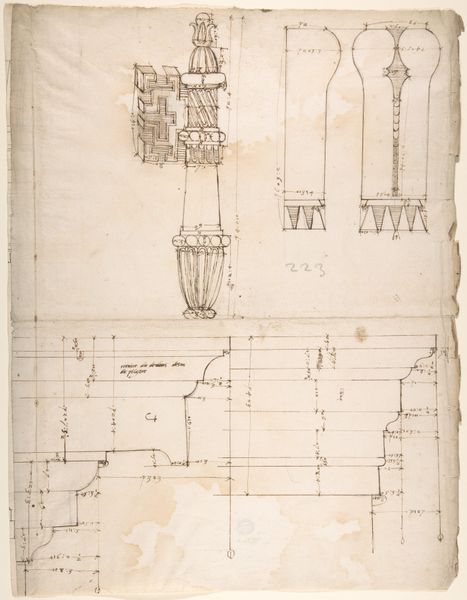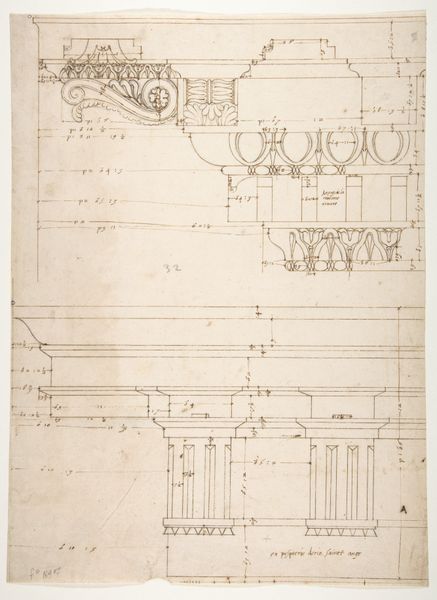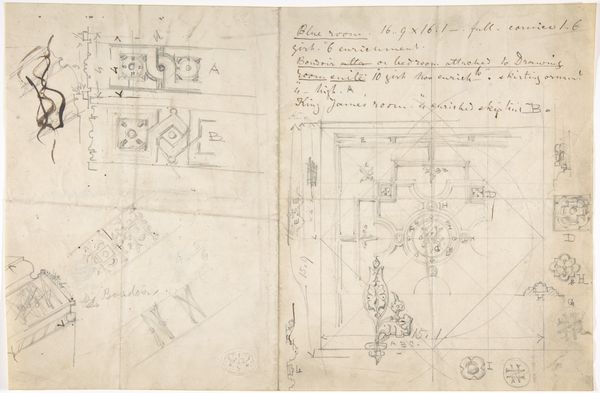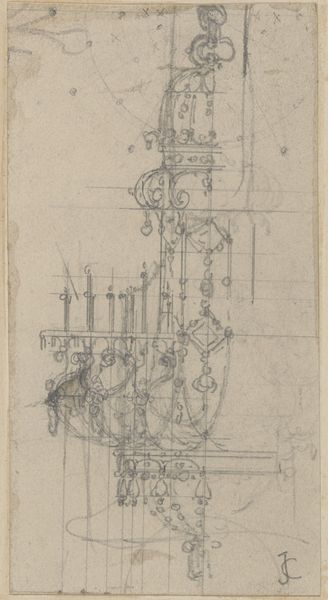
Unidentified Corinthian capital, elevation, section, and ceiling plan (recto) blank (verso) 1500 - 1560
0:00
0:00
drawing, pencil, architecture
#
drawing
#
greek-and-roman-art
#
form
#
11_renaissance
#
geometric
#
ancient-mediterranean
#
pencil
#
architecture
Dimensions: sheet: 11 7/16 x 8 11/16 in. (29 x 22 cm)
Copyright: Public Domain
Curator: This drawing, whose author is currently unknown, depicts an Unidentified Corinthian capital, elevation, section, and ceiling plan, and dates from 1500-1560. It is held at the Metropolitan Museum of Art. What are your initial impressions? Editor: Intricate, precise, almost obsessive in its detail. It's a study in form, clearly, a geometric deconstruction of classical architecture using a pencil. Curator: Absolutely, and within its context, we can observe the Renaissance fascination with classical forms, here, specifically, the Corinthian capital. The emphasis on its structure and decorative elements demonstrates that the societal move to appropriate ancient designs spoke to a bigger aspiration in civic identity and authority. Editor: Yes, look at the curling acanthus leaves, their rhythmic arrangement creating a visually appealing texture. The pencil work enhances that delicacy; there's such nuance in the shading to make a three-dimensional construction comprehensible to its makers. This piece emphasizes the play of light and shadow that the intended capital may exhibit. Curator: These meticulous notes are a study in precision, speaking to the human element striving to interpret ideals from ancient civilization. They reveal that identity and status in that period was interwoven with reclaiming classical structures, but, interestingly, what is retained or forgotten? How were social constructs reinforced in buildings inspired by antiquity? Editor: Regardless of its historical inspiration, the sheer artistry lies in its elegant geometry. The measured relationships of architectural elements remind me that, at its core, classical design represents humanity’s attempt to create perfect order out of the material world. Curator: True, yet seeing this piece allows one to reflect on how those attempts at order also impacted how societies arranged themselves. Even now, design—historical or new—can carry the hopes and constraints of the present. Editor: Yes, and a renewed look might show us a contemporary application of Renaissance thinking.
Comments
No comments
Be the first to comment and join the conversation on the ultimate creative platform.
